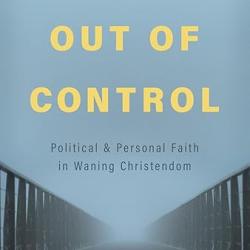*The opinions expressed here are my own (or those of the guest writer); I do not speak for any other person, group or organization; nor do I imply that the opinions expressed here reflect those of any other person, group or organization unless I say so specifically. Before commenting read the entire post and the “Note to commenters” at its end.*
The Rule of Good Intentions and Unintended Consequences
In my considered opinion, based on my own personal life experiences and reflections on them, many people who, with the very best intentions, establish laws, rules and policies to govern others’ behavior in order to protect potential victims, vulnerable people, from harm, do not give sufficient attention to the predictable negative consequences of their well-intentioned laws, rules and/or policies.
Throughout my adult life, especially in organizations, I have noticed this tendency and foreseen the negative consequences of very well-intentioned laws, rules and policies. I have experienced negative consequences for myself (and others) who dare to point out the possibility, even probability, of such consequences. Many people immediately assume that a critic of a well-intentioned law, rule or policy meant to protect vulnerable people from harm, either does not care about the well-being of the vulnerable people the law, rule or policy is intended to protect or actually despises them and wishes them harm.
I could provide numerous examples, but here I will restrict myself to one example of a policy meant to protect vulnerable people that had the unintended consequence of harming some of them. I will leave it to my readers to discern for themselves whether and how it applies analogously to other laws, rules, and policies. One public school district in which I lived (years ago) established a rule that teachers and other school employees were not allowed to touch students in any manner or for any reason—no exceptions permitted (except the nurse in an emergency)—without explicit parental consent. I knew immediately what some of the unintended negative consequences would be.
First, let me say that I understood then and still understand the good intentions driving the rule; they were to avoid physical or sexual abuse of students. How well I remember when I was in junior high school, years earlier, a male teacher who physically abused students. He was noted for dragging what he considered unruly male students out of the classroom, into the hallway and slamming them hard against lockers. He was physically intimidating and abusive, sometimes slapping and hitting students on their heads. Eventually, of course, such teachers caused law suits against the schools. Some school districts reacted to such bad behavior by a few teachers by establishing rules that employees could not touch students.
When I read that (in the local newspaper) I followed up with officials of the school district to make sure I got it right. Sure enough: “zero tolerance policy” forbidding employees from touching students—from Kindergarten up through twelfth grade—without explicit parental permission. No exceptions (except as stated above). I immediately recognized both the good intentions and the predictable negative consequences.
One to me predictable consequences was that the schools would have to call the police when a fight broke out inside the school or on the school grounds. I once literally saw teachers—including men—standing around and watching a violent altercation between two male students—egged on by their peers—and waiting for the police to arrive to separate the boys. By the time the police arrived both boys were bloodied.
Before the policy was established—with good intentions—especially male teachers would have stepped in to stop the fight by physically separating the boys.
That’s just one example; I could cite many more “zero tolerance” policies in public (and other) schools intended to help potential victims that had predictable negative consequences—even for some potential victims.
So what’s the solution to this pattern of well-intentioned and in many ways good laws, rules and policies having unintended negative consequences that could have been avoided with exceptions and common sense applications? Well, there’s part of the solution—stating exceptions to the laws, rules or policies and applying them with common sense.
Another way would be to invite and listen to comments from those potentially affected by the laws, rules or policies before establishing them—and avoid implying that, if they have qualms about the laws, rules or policies, they must not care about potential victims.
Why doesn’t this happen more often? I believe there’s one main reason: Many of the laws, rules and policies I’m talking about are forced on institutions and organizations by lawyers and insurance companies whose main, perhaps only concern is to avoid law suits.
Over the years of my professional life, and somewhat even before that, I have seen this pattern increasing. Occasionally when I have asked institutional enforcement officers about policies the response has been something like “Don’t ask me; ask the [organization’s] lawyers.” Of course, I have no access to them and even if I did I would hear “Don’t ask us; ask the company that insures this organization against damages resulting from lawsuits.”
One consequence that I see of many such well-intended laws, rules and policies is the breakdown of relationships and community within organizations. People are encouraged by many such well-intended laws, rules and policies to be suspicious of each other, not to trust each other, even to live in fear of accidently violating one. There are so many and some of them are so vague or detailed that a person cannot be confident about not violating one accidently. People in organizations that once were communities become paranoid, overly scrupulous, hesitant to form friendships within the organization. Legal codes intended to protect vulnerable people can destroy relationships and community if not carefully crafted to allow exceptions and applied with common sense.
Of course, even the mention of “common sense” seems silly anymore. No such thing exists in contexts ruled by fear of even frivolous lawsuits.
So what is my prescription for all this? Well, whatever it might be very well could and probably would gain me accusations of not caring about potential victims—from some people. I will here cautiously tread where angels should not go and suggest that we all begin to listen to the voice of common sense again and loosen up. If a good, reasonable case can be made that a well-intentioned law, rule or policy will probably have negative consequences, however, well-intentioned it may be, such should be heard without recriminations.
*Note to commenters: This blog is not a discussion board; please respond with a question or comment solely to me. If you do not share my evangelical Christian perspective (very broadly defined), feel free to ask a question for clarification, but know that this is not a space for debating incommensurate perspectives/worldviews. In any case, know that there is no guarantee that your question or comment will be posted by the moderator or answered by the writer. If you hope for your question or comment to appear here and be answered or responded to, make sure it is civil, respectful, and “on topic.” Do not comment if you have not read the entire post and do not misrepresent what it says. Keep any comment (including questions) to minimal length; do not post essays, sermons or testimonies here. Do not post links to internet sites here. This is a space for expressions of the blogger’s (or guest writers’) opinions and constructive dialogue among evangelical Christians (very broadly defined).












